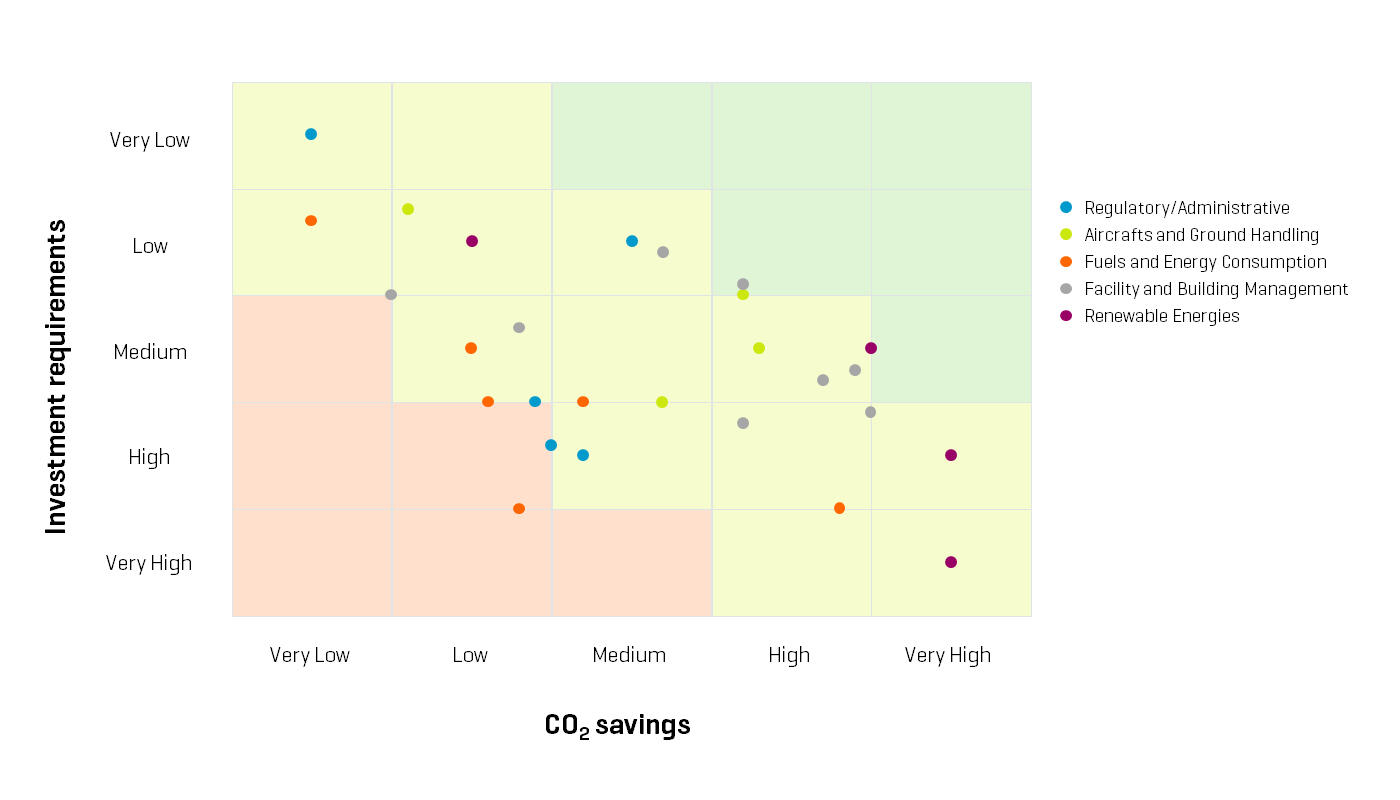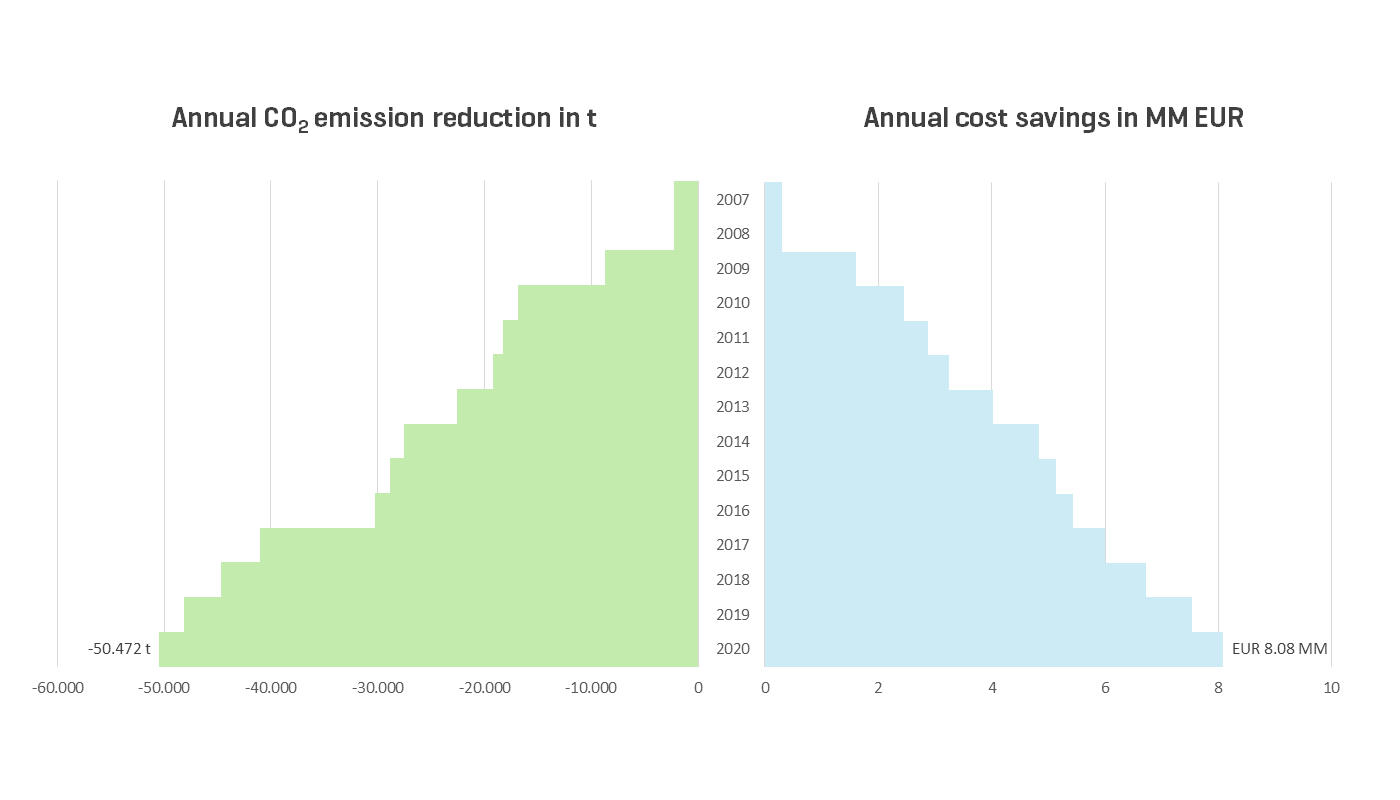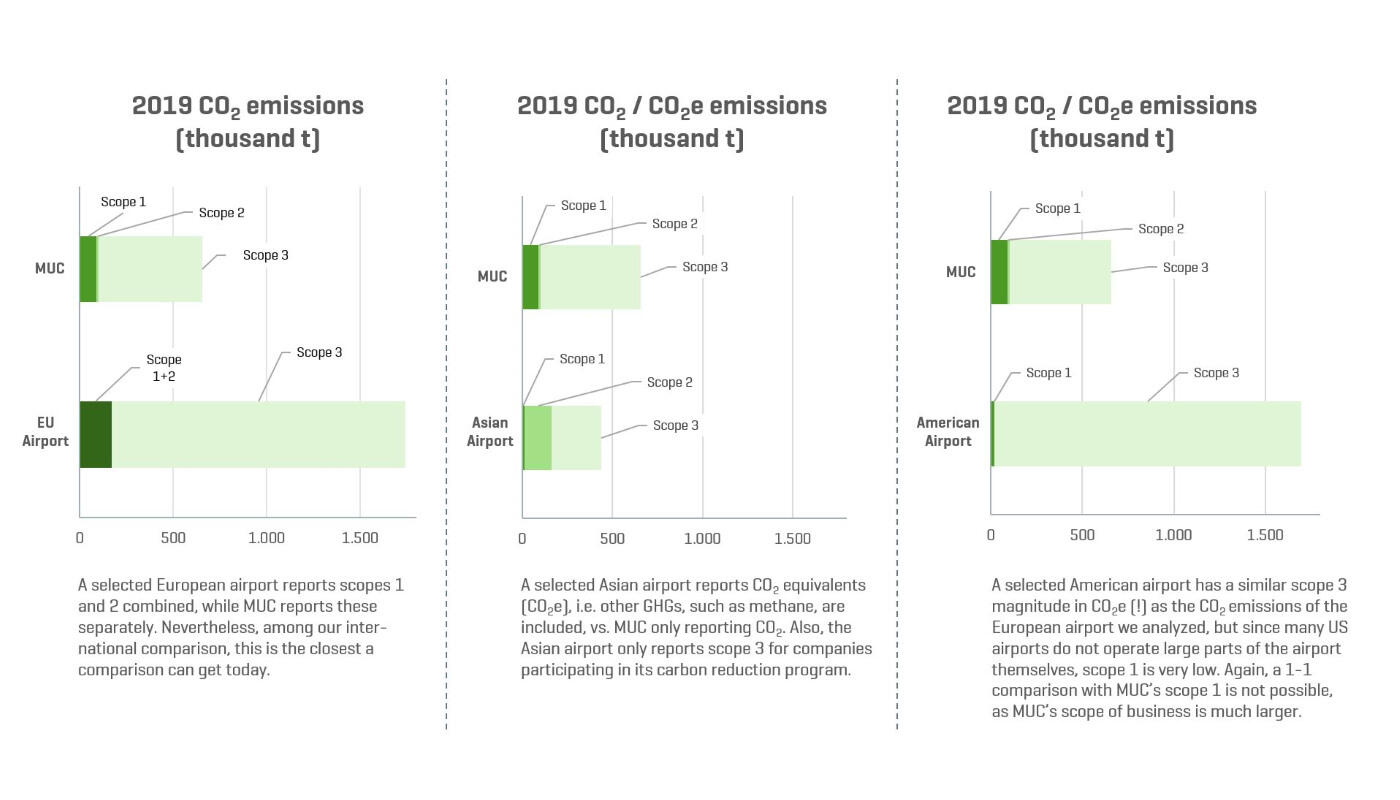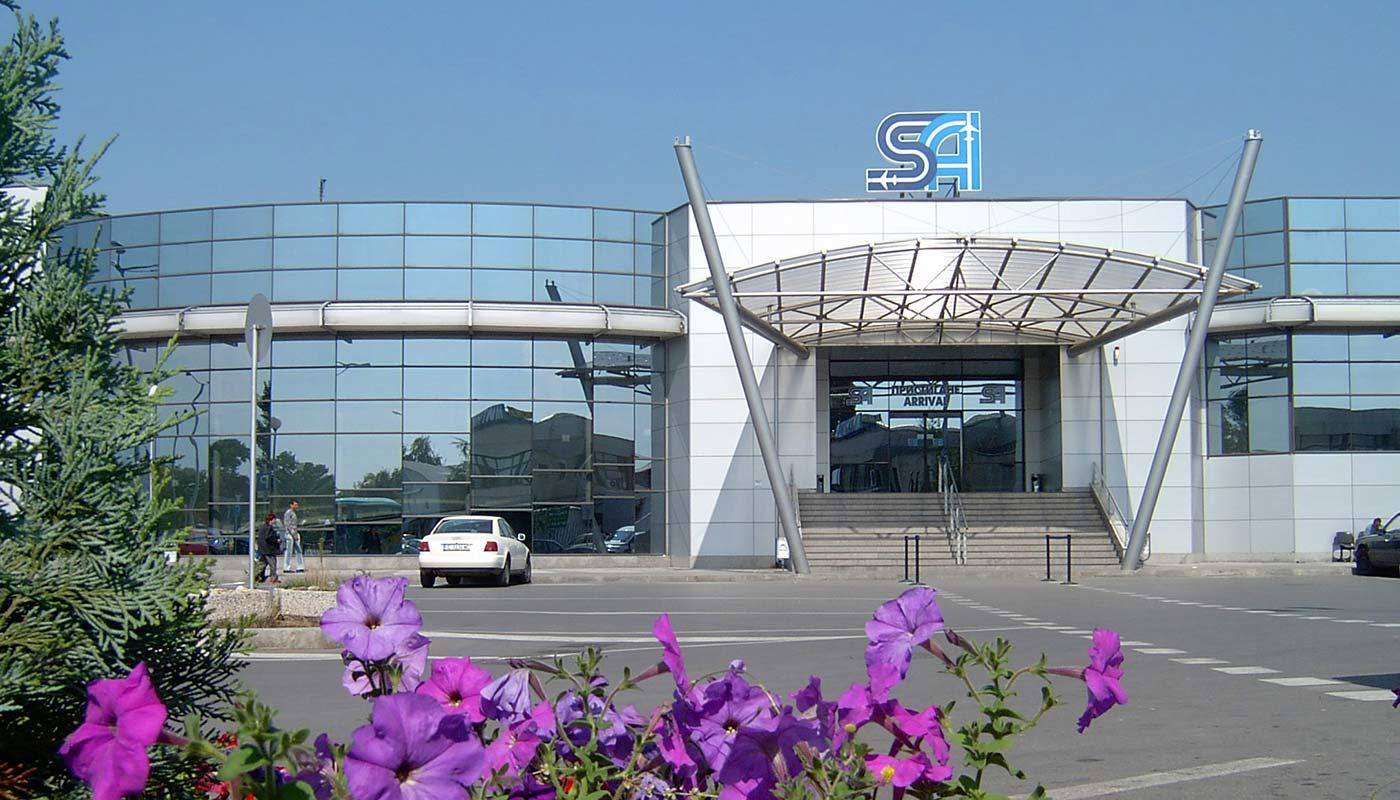The political and public pressure to reduce CO2 emissions is constantly increasing - especially in the aviation industry.
A large set of CO2 reduction measures are already available – but becoming CO2-neutral or even CO2-free requires a diligent road map, willingness and investments.
Airports have a high level of control over their scope 1 and 2 emissions but have to collaborate closely with stakeholders through a joint roadmap to reduce scope 3 emissions.
Munich Airport’s data shows that CO2 reduction can go hand in hand with significant reduction in Operating Expenditure (OPEX), highlighting that investments to reduce climate impact can pay off over time.
CO2 emissions at airports and their reduction
CO2 emissions at airports in a nutshell
Priority of climate protection increases
July 18, 2022
The Paris Agreement of 2015 legally binds participating countries to limit global warming to well below 2, preferably to 1.5 degrees Celsius, compared to pre-industrial levels [1]. Since then, selected countries have defined strategies to reduce greenhouse gas emissions throughout all of their industries. With its 'Fit for 55' plan, the European Commission aims for Europe to lead the way in climate protection and related technologies and markets, and thus also spearhead the aviation industry in reducing its overall emissions. But what does this mean for the aviation market and for airports in particular?
While the aviation industry in terms of aircraft operation accounts for about 2.8 percent [2] of total worldwide CO2 emissions and airports for approximately 0.05 percent [3], aviation stakeholders face high public pressure to reduce their climate impact. Increasingly, financial institutions also include the climate impact of borrowers into their decision making, meaning that companies with low or no CO2 emissions will have an advantage in lending money in the future.
As an airport that has been able to reduce its CO2 emissions in absolute terms by 10 percent while at the same time growing traffic by 68 percent (2005-2019), Munich Airport has been committed to reducing its climate impact and will strengthen its commitment in the future. To this end we have analyzed airports’ CO2 reduction measures on a selective and qualitative basis to learn how climate impact can be decreased when looking at it globally.
What measures can airports take to reduce emissions?
Comparing the investment needs with their actual CO2 savings, the measures lie on a relatively straight line from top left to bottom right. This means that no measures with (very) low CO2 savings potential and (very) high investment needs were identified/included - these would be misleading.
On the other hand, no measures were identified that have (very) high CO2 savings potential and (very) low investment requirements - an unfortunate indication that carbon neutrality will not be cheap to achieve. There are some exceptions to this rule, as we have seen at Munich Airport, where a deep dive into the airport's individual characteristics can reveal some surprisingly attractive quick wins (low investment, high return), but such opportunities for success can only be identified on a per-airport basis.
Regardless of which emissions fall into which CO2 scope, they must all be reduced. If it is not within the operator's direct control, guidelines must be issued to urge stakeholders to invest and implement reduction measures themselves. Meanwhile, the operator monitors progress.
A deep-dive into Munich Airport's efforts
Since introducing CO2 reporting at Munich Airport in 2007, we tracked over 290 measures (until 2019) which led to direct or indirect CO2 emission reduction. These measures have resulted in a cumulative annual saving of over 50 thousand tonnes of CO2 and over EUR 8 million of annual operating expenditure. Lower OPEX results mainly from lower energy consumption and lower maintenance costs. Such cost reductions are particularly important in light of the current inflationary environment and high energy prices, as CO2 reduction measures combine environmental with financial sustainability.
The majority of emission reduction measures have been implemented through upgrading lighting technology, improving energy production and purchase, and upgrading the heating and ventilation technology. In addition, the airport’s vehicle fleet is being continuously electrified and pilot projects implemented to e.g. increase the share of sustainable aviation fuel and rebuild existing fossil fuel passenger buses to use biofuels like methane from renewable sources.
Each airport requires an individual strategy
Even though airports are relatively homogeneous on a high-level in terms of what type of infrastructure is required, their CO2 reduction strategies and its implementation can vary significantly. This becomes very clear when comparing selected airports with respect to their CO2 (or CO2 equivalent) emissions. Depending on the scope of the airport operators’ operation, their strategies must focus on different priorities. For example, Munich Airport (MUC) includes its own ground handling subsidiary in its scope 1 emissions (direct emissions of a company), while the selected American airport operator has no own ground handling unit, which is part of the reason its scope 1 emissions are significantly lower than MUC’s. MUC will therefore have to have a detailed CO2 reduction strategy for its ground handling, while the American airport may focus on binding its contractual parties to CO2 reduction.
As shown in the figure to the right, uniform measuring and reporting of emissions remains to be implemented in the airport industry. However, global standards are available and airports are in a position to report consistently and thereby improve worldwide benchmarking, if they choose to do so.
Sources
[1] https://unfccc.int/process-and-meetings/the-paris-agreement/the-paris-agreement
[2] Lee et al., 2020; «The contribution of global aviation to anthropogenic climate forcing for 2000 to 2018»
[3] Airport Council International, 2021; Long-Term Carbon Goal Study for Airports; MAI calculation for ACI members
[4] MAI research and analysis
[5] Flughafen München GmbH, MAI analysis
[6] MAI analysis based on annual reports and sustainability reports of the airports





